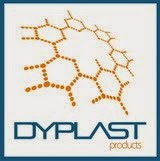
NEW WEBSITE LAUNCHED
GREATER CUSTOMER SUPPORT
AND EASE OF
NAVIGATION
Dyplast is pleased to announce a major update to our website www.dyplast.com (www.dyplastproducts.com still works)!
Our new website carries on what worked well before yet adds
additional features such as:
- Quicker access to the most relevant
information on Dyplast's ISO (polyiso) and DyTherm Phenolic mechanical
insulation products
- Quick Print Icon: Relevant
pages have quick print functionality to a printer or pdf
- Improved website search engine
optimization consistent with Google updates
- Website Blog to which you can
subscribe: Latest Dyplast news events, product updates, released technical
bulletins, and case studies
- Comprehensive integration with
social media - - particularly LinkedIn, Facebook, Twitter,
Slideshare, and Blogspot
- More Product pictures, graphics and well organized data sheets
The previous version of our website won acclaims from clients,
engineers, and even the communications industry with an award from the Public
Relations Society of America for the best industrial-focused website based primarily on the following attributes:
- Comprehensive
yet clean menu structure
- 2-clicks
to any data
- Factual,
objective presentation of technical information
- Attractive
look and feel, with well displayed graphics
- Fully
optimized for internet search engines
- Documents
in multiple formats (e.g. html, pdf, Word, and/or Excel)
Our website is designed for you!
Designed to give you quick access to our products, the data
you need, and the contact information to talk with our sales staff.
We appreciate any comments you may have on how we can better
meet your needs. And we hope you will sign up for our Newsletters, Follow our Blog, Follow us on LinkedIn, and/or Like us on Facebook
For Sales Inquiries
For sales call (800) 433-5551
or contact us at sales@dyplast.us
or view our website at www.dyplast.com
At Dyplast we stand ready to help provide you with the right
answers to your mechanical insulation, sheet insulation, and composite panel
needs.










